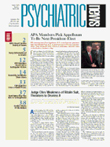Does alcoholism affect women’s brains differently from men’s? Researchers who examined that question say the answer is yes, although the findings point to different conclusions.
The researchers describe their findings in the February American Journal of Psychiatry.
Daniel Hommer, M.D., reports in one of the studies that alcoholic women experience greater decreases in brain size than alcoholic men despite similar rates of alcohol consumption during their lifetime and during the six months preceding the study.
The only significant difference was that women had been heavy drinkers for about nine years compared with about 14 years for men.
Hommer is chief of brain electrophysiology and imaging at the National Institute on Alcohol Abuse and Alcoholism in Bethesda, Md. “While on average women are physically smaller than men, the alcoholic women in our sample drank as much as the alcoholic men. They achieved higher concentrations of alcohol in their blood and more organ damage.”
In contrast, principal investigator Adolf Pfefferbaum, M.D., concludes in the second study reported in the journal that alcoholic men experienced significant decreases in brain volume, while alcoholic women experienced none.
A possible explanation for the contrasting findings is found in the differences between the samples and methods used.
Pfefferbaum compared alcoholic men treated in inpatient substance abuse units with alcoholic women treated in both inpatient and outpatient units and self-help groups. The greater likelihood that this sample of men patients thus had more chronic alcoholism may explain the greater brain shrinkage among alcoholic men.
Brains Recover Faster?
In Pfefferbaum’s study, alcoholic men and women were sober for two to three months before being tested compared with three weeks of sobriety before testing in Hommer’s study.
Pfefferbaum suggested, “Women may recover gross cortical brain matter more rapidly than men during brief periods of sobriety.”
The study of the gender effects of alcoholism on the brain has been facilitated by the development of magnetic resonance imaging (MRI). Researchers measure brain volumes by focusing on gray and white matter, intracranial cerebral spinal fluid, and ventricles and are able to compare them with those for healthy same-sex groups.
Hommer and his colleagues obtained MRIs of 43 men and 36 women admitted to an inpatient treatment unit who met the DSM-III-R criteria for alcohol dependence. They compared their MRIs with those of 20 nonalcoholic men and 19 women. The mean age was 41 for men and 40 for women.
Pfefferbaum, director of the neuropsychiatry program at the Center for Health Sciences of SRI International in Menlo Park, Calif., and his colleagues compared the MRIs of 42 women and 44 men who met the DSM-III-R criteria for alcoholism with age-matched nonalcoholic groups (37 women and 48 men). The mean age was 52 for the women and 45 for the men.
Lack of Research
A significant component of these brain studies is that they included alcoholic women, a group that historically has been excluded from such research.
Sheila Blume, M.D., chair of APA’s Committee on Treatment Services for Addicted Patients, told
Psychiatric News that 20 years ago she couldn’t find a published paper on sex differences in treating alcoholic men and women. “It was just assumed that only men were alcoholics.”
Another reason for the dearth of research is that fewer alcoholic women seek treatment than alcoholic men and are thus less likely to be recruited for studies, Blume notes.
Nada Stotland, M.D., in an editorial in the February American Journal of Psychiatry on the two studies, points out that, “Mothers may avoid treatment for fear of provoking investigations by child welfare services and losing custody of their children. Or, simply there is no safe place for their children to stay while the mothers are in treatment.”
Stotland observes that men’s drinking behaviors tend to be more public and to cause more visible damage than women’s. “Paradoxically, men’s drinking is more socially acceptable, driving women’s alcohol problems underground.” Stotland is the APA representative to the Society for the Advancement of Women’s Health and speaker-elect of the APA Assembly.
The gender gap in research is surprising given that there is an estimated 8 million alcoholic women in the U.S., according to Women for Sobriety, a national self-help organization. The number is about 12 million for alcoholic men.
Stotland underscores the need for more basic brain research and better access to quality treatment programs. “Women have different susceptibilities, clinical courses, and treatment needs than men.”
Blume echoed the need for early detection and intervention. “I have always felt that alcoholism in a woman is like a locomotive traveling at full speed towards a bridge that is out. She is rapidly heading towards a disaster.”
The consequences of untreated alcoholism in women are causing obstetrical complications, severe birth defects, and damage to the woman’s organs and the central nervous system, says Blume.
She recommended that psychiatrists include questions about alcohol consumption when taking patient histories. Blume suggested using the Alcohol Use Disorders Identification Test (AUDIT) or the CAGE questionnaire.
Another option is using the Alcohol Screening Instrument for Self-Assessment that combines the AUDIT and CAGE.
The articles, “Evidence for a Gender-Related Effect of Alcoholism on Brain Volumes” and “Sex Differences in the Effects of Alcohol on Brain Structure” are available on the Web at ajp.psychiatryonline.org/cgi/content/full/158/2/198 and ajp.psychiatryonline.org/cgi/content/full/158/2/188. ▪

